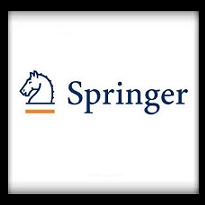دانلود ترجمه مقاله کاربرد توسعه عملکرد کیفیت qfd در طراحی ساخت و ساز آپارتمان
| عنوان فارسی مقاله: | کاربرد توسعه عملکرد کیفیت qfd در طراحی ساخت و ساز آپارتمان |
| عنوان انگلیسی مقاله: | Using Quality Function Deployment (QFD) in the Design Phase of an Apartment Construction Project |
| دانلود مقاله انگلیسی: | برای دانلود رایگان مقاله انگلیسی با فرمت pdf اینجا کلیک نمائید |
| تعداد صفحات مقاله انگلیسی | ۱۲ صفحه |
| تعداد صفحات ترجمه مقاله | ۹ صفحه |
| سال انتشار | ۱۹۹۹ |
| دانشگاه | کالیفرنیا برکلی |
فهرست مطالب:
چکیده
مقدمه
اهمیت فاز طراحی
دلیل QFD
مطالعات موردی
نیل به اطلاعات از خریداران و کاربران
توسعه ماتریس QFD
بکارگیری ادراک گروه کانونی در ماتریس QFD
ماتریس همبستگی QFD
پیشبرد طرح
نتایج
بخشی از ترجمه:
مقدمه :
شرکت های ساختمان سازی کوچک مشغول کار در بازار خانه سازی املاک و مستغلات برزیل ، همواره سعی می کنند فاز طراحی در پروژه ها را ارتقاء ببخشند، به گونه ای که بتوانند نیازهای خریداران و کاربران، به ویژه ساختمان های آپارتمانی جدید را تامین نمایند. بسیاری از شرکت های اختصاص داده شده به ساختمان سازی چند خانواده ای، با این موضوع موافقند که مهمترین بعد در بازار املاک و مستغلات ارزش زایی برای مشتریان و ارباب رجوع ها می باشد. این دست شرکت ها به طرق مختلفی برای مشتریان ارزش زایی به ارمغان می آورند. از نظر افراد مختلف، ارزش معانی گوناگونی دارد. یکی از شیوه های ارزش زایی، استنتاج ایده ها و نقطه نظرات خریداران و کاربران می باشد. ارزش را می توان اندازه واحد مسکونی در ارتباط با قیمت یا کیفیت فنی مواد و مصالح بکار رفته در کار پایانی یا سایر ویژگیهای آشپزخانه یا حمام تعریف نمود. ارزش را همچنین عاملی مهم برای سرمایه گذاری پول خریدار در دارایی های جدید قلمداد نمود. این قبیل شرکت ها همچنین با این موضوع موافقند که چالش اصلی پروژه های جدید، تعادل بین ادراک و شروط خریداران و کاربران و اهداف نهایی پروژه ها می باشد. اهداف مالی به ROI (بازده سرمایه گذاری)، برگشت، IRR (نرخ بازده داخلی)، سرعت فروش و حمایت جریان نقدی (گردش وجوه نقدی).
اهمیت فاز طراحی
درخانه سازی، فاز طراحی مسئولیت نیل به شروط مشتری را برعهده داشته و در این فاز است که شرکت نیاز دارد از طریق رسم فنی و ویژگیهای فنی، به حد استانداردهای کیفی نائل گردد. شرکت های مختلف با سئوالاتی از قبیل سئوالات زیر مواجه می باشند: نحوه دستیابی به راه حل های ابداعی یا اطلاعات لازم برای توسعه پروژه های جدید، و نحوه مدیریت تصمیم گیری به شیوه ای که از بهترین نتایج ممکن اطمینان حاصل شود. این قبیل مسائل در استراتژی بکار رفته برای طراحی سازمان نقش مهمی ایفا می کنند. یکی از اهداف مطالعه حاضر، جستجوی تعادل بین ورودی های داخلی و خارجی در فاز طراحی بود. مهم نیست چه روشی برای طراحی یا ارائه راه حل برای پروژه بکار برده شده است، مهم این است که موفقیت آن به جذب و مدیریت شروط مشتری بستگی دارد.
نتایج
QFD ابزاری ارزشمند و بسیار انعطاف پذیر برای طراحی به شمار می رود. توالی بخشها و مراحل فرایند QFD بر طبق استراتژی اقتباس شده از سوی تیم طراحی تغییر می یابد. ماتریس همبستگی در بطن فرایند QFD قرار داشته و اطلاعات دقیق مورد نیاز برای پیشبرد طرح را ذخیره می کند.
QFD به روند اولویت بندی پیشبرد و ویژگیهای طرح و همچنین تبدیل نیازهای خریداران و کاربران به اطلاعات تحت مدیریت تیم طراحی کمک می کند. به علاوه، کاربرد اطلاعات محک زنی را به شیوه ای سیستماتیک تسهیل می نماید. مشکل ترین بعد در زمینه استفاده از QFD به عنوان ابزار در طراحی پروژه املاک و مستغلات ، عدم هماهنگی گذشته در شروع کار پروژه به ویژه در خصوص ویژگیهای وابسته به راه حل های جزئی و مشروح بود. مشکل دیگر، این بود که اعضای تیم تشخیص دهند که QFD ابزاری قدرتمند و انعطاف پذیر برای ساختمان سازی به شمار می رود. مشکل آخر در زمینه کاربرد QFD ، اندازه ماتریس مرکزی است. هماهنگ کننده تیم پروژه در مطالعه موردی حاضر تصمیم گرفت تا اندازه ماتریس را به کاهش دهد، که تصمیم خوبی بود.
بخشی از مقاله انگلیسی:
INTRODUCTION
Small construction companies that operate in the Brazilian real estate housing market are trying to improve the design development phase in their projects so that they can better satisfy the needs of the buyers and users, especially for new apartment buildings.Many companies dedicated to multiple-family construction agree that the most important aspect in the real estate market is the Value2 that they can provide to their clients. These companies understand the value for their customers in different ways. The term “value”means different things to different people. One approach to value calls for the buyers and users’ points of view. Value can be defined as the size of the residential unit in relationship with the price or the technical quality of the materials used in finish work or any other features of kitchen or bathroom. Value can also be understood as something that isappropriate for the money the buyer is investing for the new property. These companies alsoagree that the primary challenge for the new projects that they are developing is the balancebetween the perception and requirements of the buyers and users and the financial goals3 forthese projects. These financial goals are typically translated into RoI (Return on Investment),Pay-back, IRR (Internal Rate of Return), speed of sales and cash-flow support.IMPORTANCE OF THE DESIGN PHASEThe Design Phase for housing is responsible for achieving client’s requirements and it is inthis phase that the company needs to reach the standards of quality through drawings andtechnical specifications.The questions for any company are how to obtain the innovative solutions or informationfor developing new projects, and how to manage decision-making in a way that ensures thebest possible results. These issues apply to the strategy for housing design. The search of abalance between external and internal inputs for the design phase was one of the goals of thisstudy. Whatever method is used to design or develop a solution for the project, its successdepends on how the company assimilates and manages the client’s requirements. WHY QFD?The study focused in a system capable of translating buyers and users needs into designrequirements, and changing these requirements into critical characteristics and specific partsrequirements. QFD (Quality Function Deployment) is a method for: a) developing a designquality aimed at satisfying the consumer, b) translating the consumers’ demand into designtargets and major quality assurance points to be used throughout the production stage (Akao1990). The QFD system involves constructing one or more matrices containing informationrelated to the others. The first matrix is sometimes referred to as the “House of Quality” andcontains information about customer’s needs and requirements.The objectives of using QFD in the project are:· Define design and specifications for the residential units meeting the highest level aspossible of customer requirements and satisfaction.· Ensure consistency between customer requirements and product’s measurablecharacteristics such as dimensions and features of rooms and finish materials used inthe construction work.· Ensure consistency between the design phase and the construction work. QFD canminimize the problems that usually are detected on the interaction between designand construction phases (including “constructability” problems and constructionreworks).· Optimize the integration of customers’ perceptions and variables that can affect theRoI (Return on Investment) such as construction cost, speed of sales, schedule andcash flow.Reduce the time to perform quality features throughout product development.QFD can be applied to the construction industry in different ways. Mallon and Mulligan(1993) used QFD on a hypothetical renovation of a personal computer workroom. Armacostet al. (1994) applied QFD to integrate the customers’ requirements in an industrializedhousing component: a manufactured exterior structural wall panel. Serpell and Wagner(1997) used QFD to determine preferences on the design characteristics of the internal layoutof a building apartment. QFD was also applied to construction (Huovila et al. 1997)involving different players working together in three construction projects: a structuraldesign firm and two contractors. This research objective was to test the applicability of QFDto construction involving companies from different backgrounds.QFD was used as a tool in this case to prioritize important points that could offer apotential of improvement according to the clients’ requirements and needs. It was usedspecially to improve the basic layout and basic specifications of the middle-class apartmentunits of the project.However, some difficulties were identified during the use of QFD:· The focus group didn’t express clearly most of their opinions, needs andrequirements.· Substantial increase on the time expended by the project management team inplanning and analyzing the data collected.Difficulties in working with large-sized matrix.· It is hard to process the information inputted in the QFD matrix.CASE STUDIESThese case studies apply QFD in the design improvement of a multiple-family apartmentbuilding located on an urban area of a mid-sized city in Brazil. The project includes 48 unitsof residential apartments in one tall building (thirteen floors) and the construction area wasapproximately 5,000 m2 (about 54,000 ft2). The estimated budget for this project was aroundUS$2.0 million. The basic layout of each unit includes 2 bedrooms, 2 bathrooms, 1living/dining room, kitchen, laundry and balcony. The developer of this project is a smallowner-operated real estate development and construction company.
| عنوان فارسی مقاله: | استفاده از توسعه تابع کیفیت (QFD) در فاز طراحی یک پروژه آپارتمان سازی |
| عنوان انگلیسی مقاله: | Using Quality Function Deployment (QFD) in the Design Phase of an Apartment Construction Project |


